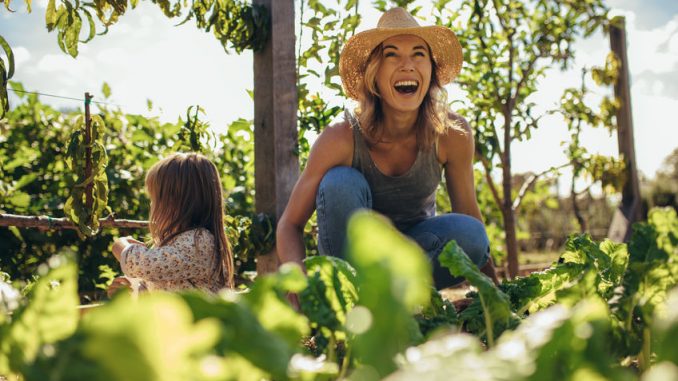
Gardeners manage a substantial chunk of the outdoor space in any village, town or city, so this is not just about window dressing. What you do in your garden can really impact on air quality, biodiversity and environmental pollution levels.
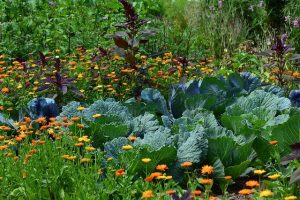
Here is our guide to help you make your garden more sustainable:

1. Choose Peat Free Compost
If you buy compost, choose one that is completely peat-free.
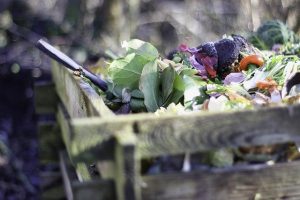
2. Make Your Own Compost
Creating your own compost heap is a great way to recycle food and garden waste into a rich, healthy fertiliser for your soil. You literally turn your kitchen and garden waste into fertiliser for free!
Making your own compost will also reduce the need to add chemical fertilisers to your soil, and reduce your consumption of single-use plastic bags.
If you have a small or middle-sized garden, making your own compost probably won’t make all you need, but it will certainly help and save you some money.
There are two methods to making compost. You can either use the fast ‘hot’ method and the slow ‘cold’ method.
So what’s the difference?
Cold composting is the easiest method. It’s a good way of disposing of some of your garden waste (avoid composting weeds) and some types of kitchen waste (not meat and fish). It will take at least a year to rot down, so unless you have enough space for several compost bins, you will still need to buy some in.
There’s a good guide to making your own cold compost here.
Hot composting is more tricky, but makes compost more quickly. You’ll need to turn it at specific intervals, check the temperature and balance the ‘green’ and ‘brown’ waste. Check out this helpful video to help you get the balance right.
Because the microbes that produce the compost have ideal living conditions in hot composters you get good, usable compost in a couple of months. You will also be able to compost weeds in a hot system because the heat kills the roots and seeds.
Some hot composting systems such as Hotbin let you compost all your kitchen waste, including meat and fish.
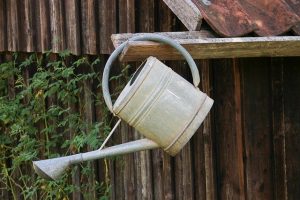
3. Water Less
It may surprise you to know that during the summer months about 30% of your household water usage will be in your garden.
If your water supply is metered, then that will be costing you quite a bit, never mind the negative environmental impact.
There are lots of ways for you to save water to make your garden more sustainable.
Collecting rainwater is the easiest way, so get a water butt. They are available in a wide range of sizes, but the key is to get the biggest one that you can reasonably fit in the space that you have.
Many water butts are sold with ‘diverter kits’ so you can divert rainwater from your roof guttering into them. They are a great option for quickly replenishing your water supply.
Reusing waste household water, known as ‘grey water’, for the garden is also a great idea. Wash up in a bowl and use the water directly on your garden. The phosphates in the detergent will also add nutrients to the soil.
Finally, water efficiently and reduce the amount of watering that you do. Don’t water little and often; instead give plants a good soak more infrequently.
Water your vegetables, plants in pots and annuals. Established perennials and shrubs don’t need it, particularly if you add a good layer of mulch around them in the spring. Finally, don’t water your lawn. If it’s well established, let it go brown in the summer….. It will recover!
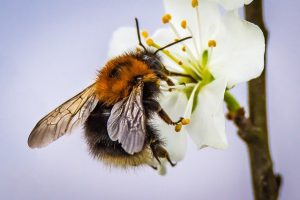
4. Reduce Your Pesticide Use
Every garden is affected by pests at some point, but sustainable gardening means you need to avoid reaching for chemical pesticides as often as you can.
Pesticide overuse is one of the main factors behind the catastrophic decline of insect populations we have seen in recent years.
Insects do far more good in our gardens than harm. They are a vital food source for lots of wildlife and they also pollinate the vast majority of our food crops.
The best approach to controlling insect pests is to try and stop them becoming a problem in the first place. Our biggest weapon is the insects and wildlife that feed on the pests.
The plants you grow will have an impact. Choose plants that are attractive to bees, butterflies, moths and other pollinating insects; the RHS plants for pollinators will help you make good choices.
Ladybirds, lacewings and spiders will all help keep aphids under control. Frogs and ground beetles will feast on caterpillars and slugs. Encourage wildlife into your garden by incorporating a wood pile, a pond or investing in a bug hotel will encourage beneficial wildlife to take up residence in your garden and reduce the pest population.
Nematodes are useful natural predators to slugs, chafer grubs and other plant pests.
Companion planting is another useful natural method of pest control. This involves growing mutually beneficial crops together. For example, French marigolds emit a strong odour which discourages greenfly and blackfly, making them the perfect companion for tomatoes and beans. Carrots and leeks are also a good pairing: leeks ward off carrot fly while carrots repel leek moth.
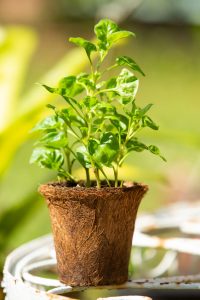
5. Limit The Plastic
Most garden centre plants are sold in black plastic pots. They can be very hard to avoid.
The problem is that they aren’t yet recyclable in most areas, so unless you recycle them they’ll go straight to landfill.
Some garden centres now sell all plants in recyclable pots, although these are still depressingly few and far between. Some garden centres, such as Dobbies, now have a recycling service for plastic pots which is a a step in the right direction..
While we wait for the industry to brush up their eco-credentials, re-use the pots you already have. You shouldn’t need to buy any new pots, and if you do there are lots of recyclable pots available to buy.
Alternatively make your own. Seedling pots are easy to make out of newspaper or cardboard tubes from kitchen and toilet roll.
The take home is that sustainable gardening will help you contribute to a happier, healthier planet.
When you grow in a greener, more sustainable way, you’ll help preserve natural resources, produce less waste, use fewer chemicals, and save money too. What’s not to love?!

Leave a Reply